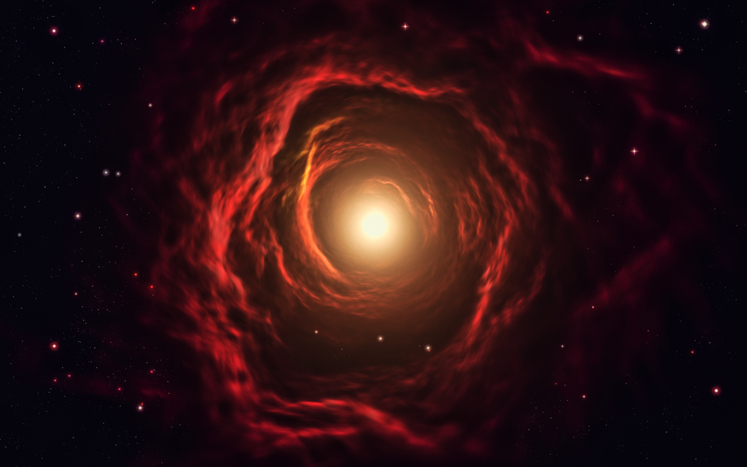Scientists are observing the most energetic flare ever seen emanating from a supermassive black hole, apparently caused when this celestial beast shredded and swallowed a huge star that strayed too close.
The researchers said the flare at its peak was 10 trillion times brighter than the sun. It was unleashed by a black hole roughly 300 million times the mass of the sun residing inside a faraway galaxy, about 11 billion light-years from Earth. A light-year is the distance light travels in a year, 5.9 trillion miles (9.5 trillion km).
Black holes are extraordinarily dense objects with gravitational pull so strong that not even light can escape. Most galaxies are thought to have one at their center. The black hole in this research is extremely massive – more so, for instance, than the one at the center of our Milky Way that possesses roughly 4 million times the mass of the sun.
The researchers said the most likely explanation for the flare is a large star being pulled into the black hole. As material from the ill-fated star falls inward, it causes a flare of energy when it reaches the black hole’s point of no return.
The researchers believe the star was at least 30 times, and perhaps up to 200 times, the mass of the sun. It may have been part of a population of stars orbiting in the vicinity of the black hole and somehow was sent too close through some interaction with another object in the neighborhood, the researchers said.
“It seems reasonable that it was involved in a collision with another more massive body in its original orbit around the supermassive black hole which essentially knocked it in,” said Caltech astronomer Matthew Graham, lead author of the study published on Tuesday in the journal Nature Astronomy.
“It was put on a much more elliptical orbit, which brought it much closer to the supermassive black hole at its closest pass – too close, it turns out,” Graham added.
Supermassive black holes are surrounded by a disk of gas and dust being drawn inward after being caught by their gravitational strength.
“However it happened, the star wandered close enough to the supermassive black hole that it was ‘spaghettified’ – that is, stretched out to become long and thin, due to the gravity of the supermassive black hole strengthening as you get very close to it. That material then spiraled around the supermassive black hole as it fell in,” said astronomer and study co-author K.E. Saavik Ford of City University of New York Borough of Manhattan Community College and Graduate Center.
The flare would be the result of the gas from the shredded star heating up and shining as it falls into oblivion.
The star thought to be involved was unusually massive.
“Stars this massive are spectacularly rare both because smaller stars are born more often than massive ones, and because very massive stars live very short lives,” Ford said.
The researchers suspect that stars that orbit near a supermassive black hole can increase in mass by attracting some of the material swirling around the black hole, making them abnormally large.
The researchers observed the flare using telescopes in California, Arizona and Hawaii. They considered other possible causes such as a star exploding at the end of its lifetime, a jet of material streaming outward from the black hole or a phenomenon called gravitational lensing that could have made a fainter event look more powerful. None of these scenarios fit the data.
Because of the time it takes for light to travel, when astronomers observe faraway events like this they are looking back in time to an earlier epoch of the universe.
The flare brightened by a factor of 40 during the observations, apparently as more and more material from the star fell into the black hole, and peaked in June 2018. It was 30 times more luminous than any previously observed black hole flare. It is still ongoing but diminishing in luminosity, with the entire process expected to take about 11 years to complete.
“The flare is still fading,” Graham said.
(Reuters)










